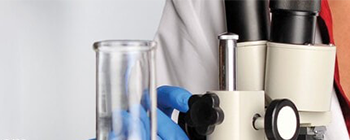Learn More
CCL2 (MCP-1) Monoclonal Antibody (2H5), PE, eBioscience™, Invitrogen™
Armenian Hamster Monoclonal Antibody
Supplier: Invitrogen 12709682
Description
Description: The 2H5 monoclonal antibody reacts with mouse, rat, and human monocyte chemoattractant protein-1 (MCP-1), also known as CCL2 and MCAF. Applications Reported: The 2H5 antibody has been reported for use in ELISA, intracellular staining for flow cytometric analysis, and neutralization. (Please use Functional Grade purified 2H5, cat. 16-7096, in functional assays.). Applications Tested: This 2H5 antibody is tested by flow cytometric analysis of fixed permabilized LPS-stimulated mouse thioglycolate-elicited peritoneal exudate cells. It is offered in 2 formats: - μg size: has been tested by flow cytometric analysis of fixed permabilized LPS-stimulated mouse thioglycolate-elicited peritoneal exudate cells. This can be used at less than or equal to 0.25 μg per test. A test is defined as the amount (μg) of antibody that will stain a cell sample in a final volume of 100 μL. Cell number should be determined empirically but can range from 10^5 to 10^8 cells/test. It is recommended that the antibody be carefully titrated for optimal performance in the assay of interest. - test size: has been pre-titrated and tested by flow cytometric analysis of fixed permabilized LPS-stimulated mouse thioglycolate-elicited peritoneal exudate cells. This can be used at 5 μL (0.25 μg) per test. A test is defined as the amount (μg) of antibody that will stain a cell sample in a final volume of 100 μL.
This gene is one of several cytokine genes clustered on the q-arm of chromosome 17. Cytokines are a family of secreted proteins involved in immunoregulatory and inflammatory processes. The protein encoded by this gene is structurally related to the CXC subfamily of cytokines. Members of this subfamily are characterized by two cysteines separated by a single amino acid. This cytokine displays chemotactic activity for monocytes and basophils but not for neutrophils or eosinophils. It has been implicated in the pathogenesis of diseases characterized by monocytic infiltrates, like psoriasis, rheumatoid arthritis and atherosclerosis. It binds to chemokine receptors CCR2 and CCR4.Specifications
| CCL2 (MCP-1) | |
| Monoclonal | |
| 0.2 mg/mL | |
| PBS with 0.09% sodium azide; pH 7.2 | |
| P10148, P13500, P14844 | |
| Ccl2 | |
| Affinity chromatography | |
| RUO | |
| 20296, 24770, 6347 | |
| 4° C, store in dark, DO NOT FREEZE! | |
| Liquid |
| Flow Cytometry | |
| 2H5 | |
| PE | |
| Ccl2 | |
| Acidic seminal fluid protein; AI323594; C-C motif chemokine 2; C-C motif chemokine ligand 2; Ccl2; chemokine (C-C motif) ligand 2; GDCF-2; HC11; H-MCP-1; HSMCR30; immediate-early serum-responsive JE protein; immediate-early serum-responsive protein JE; Je; MCAF; Mcp1; MCP-1; MCP1A; MCP-1A; MGC9434; Monocyte chemoattractant protein 1; monocyte chemoattractant protein-1; monocyte chemotactic and activating factor; Monocyte chemotactic protein 1; monocyte chemotactic protein 1A; Monocyte secretory protein JE; monocyte-chemoattractant protein-1 precursor; platelet-derived growth factor-inducible protein JE; RP23-350G1.3; SCYA2; Sigje; small inducible cytokine A2; small inducible cytokine A2 (monocyte chemotactic protein 1, homologous to mouse Sig-je); small inducible cytokine subfamily A (Cys-Cys), member 2; small inducible gene JE; small-inducible cytokine A2; SMC-CF | |
| Armenian Hamster | |
| 100 μg | |
| Primary | |
| Human, Mouse, Rat | |
| Antibody | |
| IgG |
For Research Use Only.



-Flow-20170216130641.jpg-250.jpg)